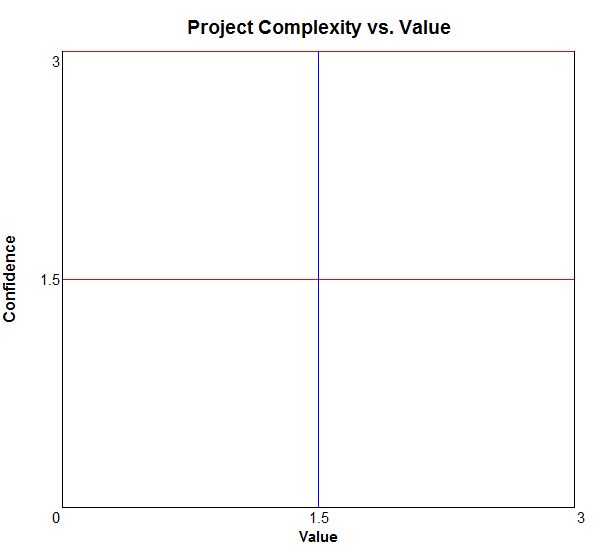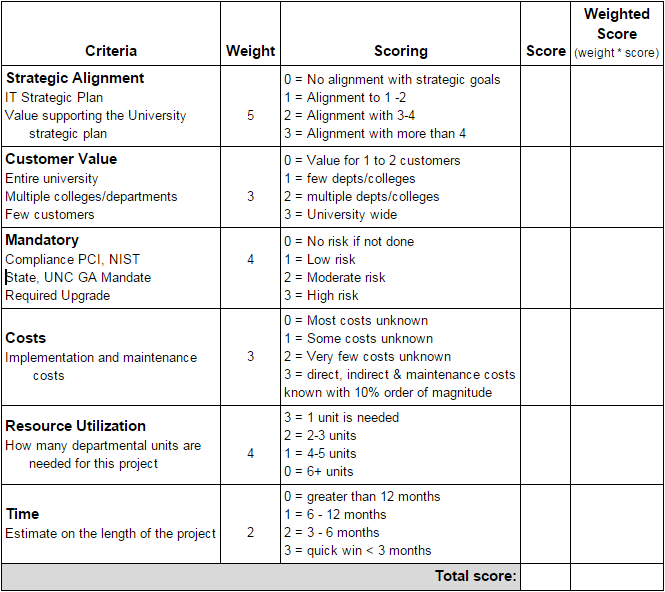Scoring
It is important to score all projects while in the early stages of planning or proposing a project. By scoring your project you can get a better idea of how viable and worthwhile the project is. Below is a suggested guideline for scoring your project that considers the benefits and value of the project as well as the confidence in the project overall.
Simply enter a score for each criteria based on the scoring scale, then multiply each score against the weight to get a weighted score. You can evaluate your projects based on this score (out of a possible total of 63) using any preferred methods.
Classification
Using the unweighted scores from the scoring matrix, you can determine the value ranking and confidence level of your project. Use the
following formulas to determine these values:
Value = (Strategic Alignment + Customer value + Mandatory score) / 3
Confidence = (Costs + Resource Utilization + Time) / 3
To classify your project, you will plot these scores on the Project Complexity vs Value chart seen on the right. Then, based on which quadrant your project scores in, you can view your project’s classification based on the table below.
Quadrant |
Implication |
Inference |
Project Governance |
Top Right
|
Quick wins |
High Value and less risk |
Structured Project ManagementProject workbook, monthly Dashboard reportingSteering committee for decision |
Bottom Right
|
Complex projects that require high governance |
High Value but several unknown risks |
Structured Project ManagementDetailed documentationEstablish formal team, roles and responsibilities |
Top Left
|
Do only if resources are available |
Lower Value and lower risk |
Basic project management portfolio representation |
Bottom Left Quadrant |
Hold off for further investigation |
Lower Value and higher risk |
Project should not be initiated |

